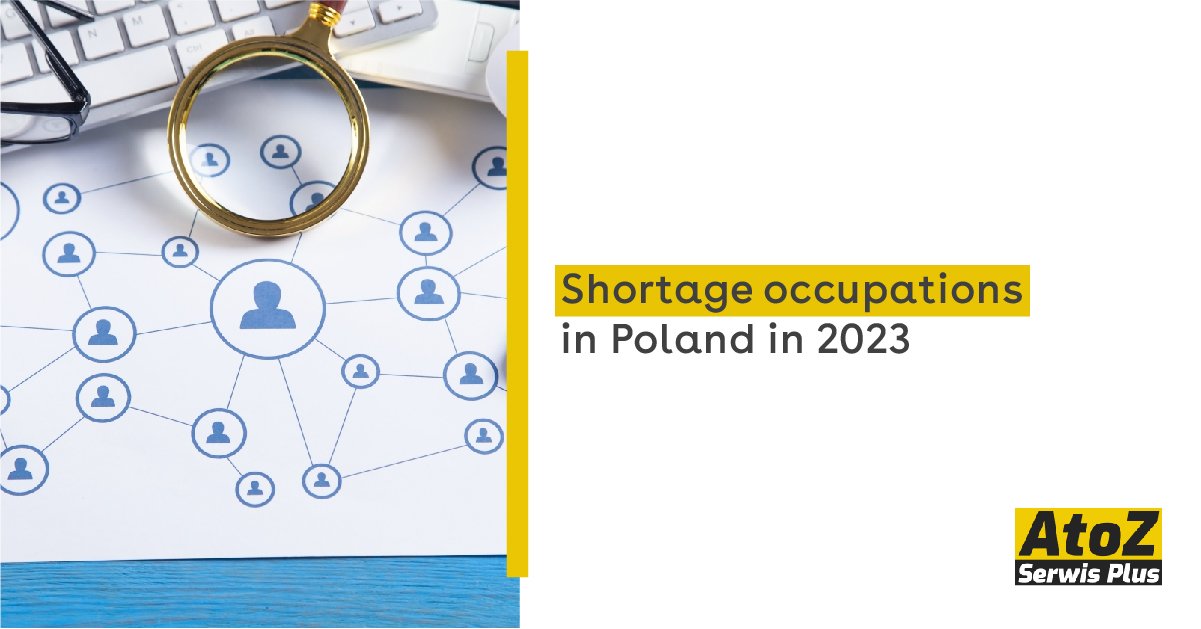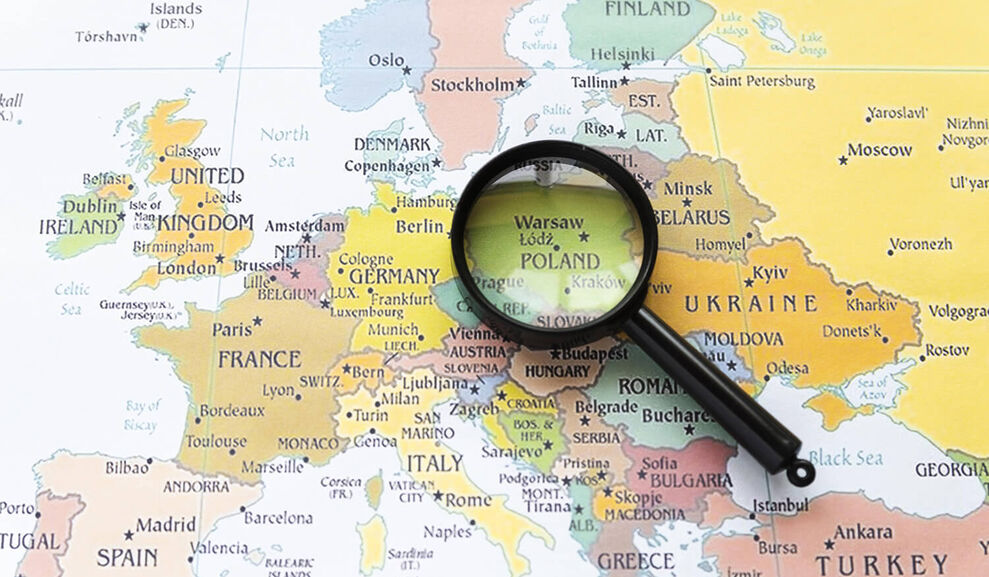

Shortage occupations in Poland in 2023
As of Our knowledge cutoff in 2021, there were several shortage occupations in Poland, defined as jobs with a significant gap between the supply and demand of qualified workers. Some of these shortage occupations included:
- IT specialists, especially software developers and programmers
- Engineers, mainly mechanical and electrical engineers
- Health professionals, including doctors, nurses, and pharmacists
- Skilled tradespeople, such as welders, mechanics, and construction workers
- Teachers and educators, especially in STEM fields
- Agricultural workers, including farmers and farmhands
To address the shortage of skilled workers in these occupations, the Polish government has implemented various initiatives, such as offering financial incentives for students pursuing careers in these fields, streamlining the visa application process for qualified foreign workers, and providing vocational training and education programs to help workers gain the necessary skills.
The Polish economy has increased in recent years, and the local labour market increasingly needs workers from abroad. Only according to the official information of the Ministry of Foreign Affairs of Poland, today this country employs up to 2 million Ukrainians, who are mainly employed in the service sector, construction and agriculture. In addition, about 40 thousand Ukrainian students received Polish residence permit to study in local universities.
Economic prosperity and rising living standards in Poland attract many applicants, especially from countries such as Ukraine and the Republic of Belarus, where average wages are much lower. By the way, many foreigners strive to obtain a Pole card, which allows them not only to work but also to do business freely on the Polish territory and gives a lot of other advantages. Let's find out what professions are in demand in Poland in 2023.
The labour market in Poland
As of Our knowledge cutoff in 2021, the labour market in Poland was characterised by a relatively low unemployment rate and a growing economy. The unemployment rate in Poland has been steadily declining in recent years and was around 6% in 2021, which is below the European Union average. However, there are still regional and sectoral differences in unemployment rates, with higher rates in rural areas and lower rates in urban centres.
In terms of employment sectors, the largest employers in Poland are the service sector, manufacturing, and construction. There is also a growing IT sector, which is fueled by the availability of a skilled workforce and a supportive business environment. The Polish government has implemented various initiatives to support the labour market, such as providing subsidies for companies that hire workers, promoting vocational training programs, and offering incentives for businesses to invest in research and development.
Despite the positive trends in the labour market, challenges still need to be addressed, such as a skills gap in specific industries, the need for more flexible employment arrangements, and the need to ensure equal opportunities for all workers.
Unemployment in Poland during the year is at most 5-7 %. In 2014, the share of foreigners in the local labour market increased by more than 300%. It is mainly due to seasonal and permanent workers from Ukraine. Today the demand for foreign specialists is not decreasing. At the same time, the Polish Border Guard Service and the National Labour Inspectorate strictly monitor whether Polish employers and migrant workers have permits that confirm legal employment.
Official employment in Poland for citizens from countries outside the European Union usually involves a preliminary search for an employer, signing an employment contract, obtaining a work permit and obtaining a Polish work visa. One of the main requirements is no applicants for vacancies among Poles and Europeans. Illegal professional activity in Poland is subject to severe fines and deportation from the country, followed by a ban on entry.
The official minimum wage in Poland in 2023 is 3,490 PLN (745 EUR) per month. According to the Polish Central Statistical Office, the average salary in Poland is PLN 6,885 monthly (1,470 EUR). After-tax deductions, the employee has 5,025 PLN (1,075 EUR). The highest income is provided by work in Warsaw – PLN 8,395.76 per month before taxes, which is equivalent to 1,795 euros.
Shortage of occupations in Poland in 2023 List
| Occupation | Description |
|---|---|
| IT Specialists | Demand for software developers, programmers, and cybersecurity experts due to the growing IT sector and digitalisation of industries. |
| Engineers | Particularly in the areas of mechanical, electrical, and civil engineering due to the ongoing demand for infrastructure development. |
| Health Professionals | Demand for doctors, nurses, and other medical staff due to an ageing population and increasing demand for healthcare services. |
| Skilled Tradespeople | Due to ongoing demand for infrastructure development and maintenance, such as welders, mechanics, and construction workers. |
| Teachers and Educators | Especially those with qualifications in STEM fields, due to the need to develop a highly skilled workforce. |
| Agricultural Workers | Including farmers and farmhands, due to the need for efficient food production and the ageing of the farming workforce. |
These shortage occupations have been identified as having a significant gap between the supply and demand of qualified workers. The Polish government has implemented initiatives to address these shortages, including financial incentives for students, streamlining the visa application process for qualified foreign workers, and vocational training and education programs to help workers gain the necessary skills.
Types of Polish work visa
Here is the list of the work visas for which individuals can apply:
- Type A: One has to choose this if your employer has a registered office in Poland.
- Type B: The work visa is valid only if you are a board member living in the country for more than six months in twelve months.
- Type C: If you have been sent to the country by any foreign employer for a period exceeding 30 days for the employer’s branch or subsidiary office.
- Type D: This visa allows you to live in the country only if your employer has sent you to work in export services.
- Type E: Choose this visa if your reason for entering the country for work is that you don’t fall under the above four keys.
Requirements for applying
Your employer is bound to give you the following requirements before you apply for a Polish work visa:
- Written employment contract along with a translated copy of the contract in your preferred language
- Check your residence permit or visa
- Register under social security and health insurance institutions in less than seven days to avail yourself of free healthcare, sick leaves, etc.
Arrange a checklist of requirements for a Polish work visa
The requirements needed for a Polish work visa are as follows:
- Application form with proof of payment of the application fee
- Health Insurance copy
- Salary receipts of the employers
- Deed of the company
- The Legal status of the applicant
How can AtoZ Serwis Plus assist you?
AtoZ Serwis Plus will provide the services listed below to get a Polish work visa:
- Counseling: Get AtoZ Serwis Plus’ free counselling services.
- Job services: Avail of AtoZ Serwis Plus’ job search services to find jobs in Poland
- Reviewing requirements: AtoZ Serwis Plus reviews all your requirements for a Polish visa
- Application process: We also help in completing your application process
- Requirements checklist: AtoZ Serwis Plus also helps you in arranging the requirements for a Polish work visa
Willing to work in Poland? Talk to AtoZ Serwis Plus, Poland’s no. 1 overseas immigration consultant.





